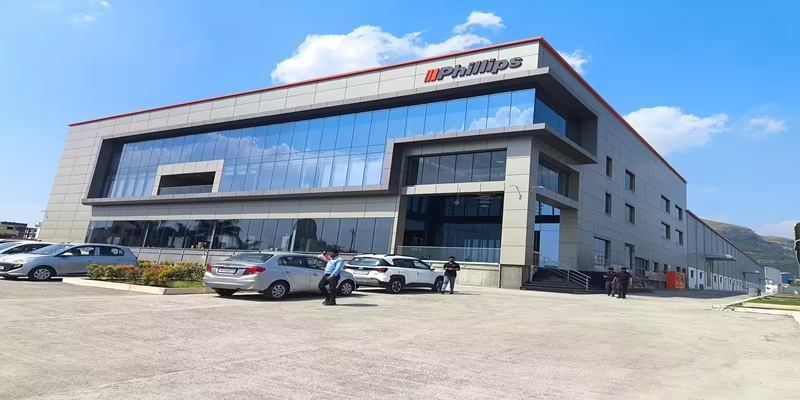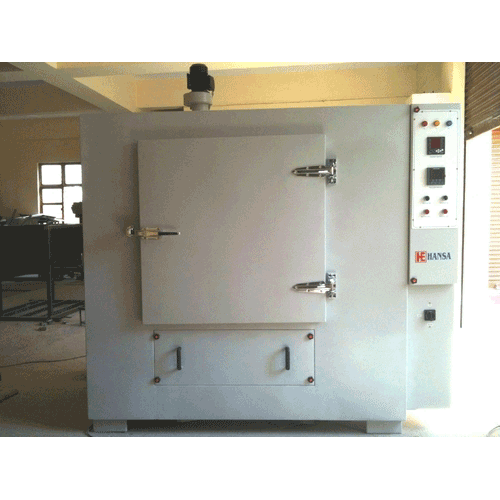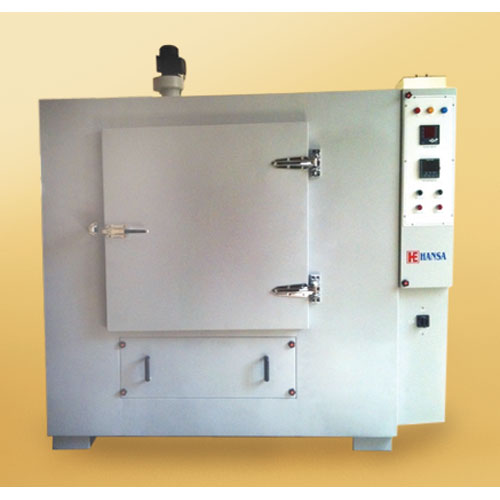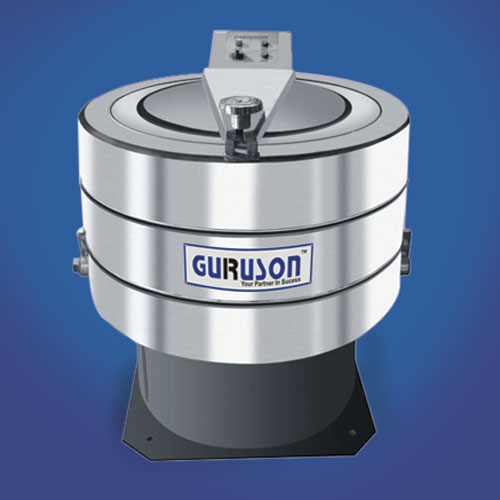Schedule a Call Back
Indian manufacturing at the crossroads: Global or local?
 Articles
Articles- Feb 17,23

As the Indian economy prepares to create a new playing field, the three key components – manufacturing, services and agriculture – are assessing their options and their future. What role will each play in breaking the five trillion barrier? But the Indian economy has never been about just money, it has been about the general well being of all its people, and, in the larger context, vasudaiva kutumbakam. The Indian ethos and culture has never allowed for a single idea to become an obsession, and govern all others. Which is what has happened in the west – money, through the rampant practice of capitalism, has become such a prime commodity, that anything else is not worth even a discussion, in day to day parlance. To an extent, that, most B Schools, and, increasingly, other institutions, are discussing only how to ‘make money’. The bottom line, as they say, is profit.
Fortunately, this situation seems to have come to a head, with many now openly talking about the Triple Bottom Line, the seventeen Sustainable Development Goals, and ESG (Environment, Social and Governance). ‘Limits to growth’ was coined after the acid rain phenomenon in Canada in the early eighties. The gaping hole in the ozone layer made leaders hit the pause button on unfettered expansion of industries. Global warming was recognised as a reality, with its deleterious effects on climate.
Industrialisation is not new to India. Figure 1 shows that India and China dominated the world GDP between 1500 and 1700 AD.
The decline in the Indian GDP started after 1700 and the downward trend stopped somewhere around 1950. That is, 250 years of de-growth. China also plunged between 1800 and 1950. However, Asian economies have been on the growth path since WW 2. The trend of industrialisation soon made agriculture a marginal player in many of the advanced economies. The contribution of agriculture to the economy has fallen below 3 per cent in many of these countries. Manufacturing and services sectors of economies have grown substantially, especially the latter, and, in many countries, it has crossed the 50 per cent mark. Manufacturing has shrunk, in terms of percentage to the total GDP.
Growth drivers
Under such a scenario, Indian manufacturing is trying to rediscover itself. The slogans that have been driving this trend are ‘Make in India’, ‘India as a Global Manufacturing Hub’, ‘China Plus India’ policies of many importing countries, etc. These have led to a renewed interest in manufacturing in India. The question of interest then is: whither Indian manufacturing in the next five years? What are the likely trends? Do India’s past civilisational values hold any interest for the future development of this sector of the economy? (Recently, it has been reported that Raghuram Rajan has opined that India should become a services economy rather than a manufacturing one).
The UN Report on Industrial Development post Covid (2022, Vienna) has identified ISID – Inclusive and Sustainable Industrial Development as the new paradigm. The word Inclusive has been added to the concept of Sustainability, which word the UN defined around 1987, by the Gro Harlem Brundtland Committee report. John Elkington coined the term Triple Bottom Line (TBL), which became a driving force for a change from the culture of ‘growth without limits’. Given all these happenings, it is necessary for India to coin a new mantra for economic growth: Growth for prosperity, equity and peace (GPEP). As against the current pursuit of growth for capitalists enrichment, the Indian economic growth mantra will fit in with its key concept of Vasudaiva Kutumbakam.
The GDP in 2022-23 is likely to be $ 3.5 trillion. If this has to go to 7.77 by FY 2031 (as per a projection by Morgan Stanley in a research report dated October 2022), then the manufacturing industry has to grow from about $ 650 billion to $ 2 trillion, which is 25 per cent of the GDP in 2031. This means GDP has to grow by 3.5 times from the current level that is a CAGR of 15 per cent - a very tall order given the past performance. But then, a breakthrough has to be achieved. What is the prognosis for achieving this?
‘Moving on all fronts’ is a type of business strategy wherein a company attacks several ‘weaknesses’ all at once. In this, one attacks all the open fronts, which will lead to the ultimate goal. The assumption here is that some of the attacks are bound to fail, but, overall, the end goals can be achieved. Somewhat similar to the Japanese Ikigai. But then, the risks are high too, and some wastage is inevitable. But, in an economy like India, which is underdeveloped, this strategy is good to follow as a tool to get into an irreversible orbit of upward moving spiral. (For example, the latest report by McKinsey and company prepared jointly with FICCI titled ‘Indias Century’, and released in December 2022, mentions that three states – Maharashtra, Gujarat and Tamil Nadu account for 40 per cent of the manufacturing net value add of India. The other 25 states put together contribute only 60 per cent).
The upward moving spiral is the key concept in business excellence – continuous improvement, and moving up the value ladder. This is the third dimension to the PDCA cycle or the ‘Deming cycle’. In order to see how this can be applied in Indian manufacturing, one can use the PDCA analogy. In the EFQM model of business excellence, the enabler-action-results-improvement cycle is shown to lead to superior results over the long term. Applying this philosophy, let us see how Indian manufacturing is poised to make the leap forward.
Taking a big leap
Enablement includes all the actions to create conditions needed for growth. In India, these will include an immediate build up of world class infrastructure - roads, bridges, railways, 4G/ 5G connectivity, logistics and warehousing, healthcare, insurance, reliable banking and such like. In the past few years, road building has been taken up at breakneck speeds. World class highways have been built and put into use. Introduction of the bullet train (to be launched soon), the Vande Bharat trains, new railway bogies, metro trains and railways in many India cities, introduction of 5G telecom systems, river cruise on the Ganga, etc have all been brought into operation. The latest is the launch of the PM GatiShakti National Master Plan (NMP) for multimodal connectivity infrastructure to various economic zones. This will revolutionise the logistics industry in India.
‘Action’ is the second step in building a global manufacturing hub in India. This includes capital investment by companies (both government and private sectors), increased product variety, larger volumes of production, innovations push, production in India of products usually imported, and manufacture for exports. The GoI has pushed the PLI scheme to many industries. Private companies have taken up the opportunities to set up new product lines, especially in the chip manufacturing sector. Both Tata and Vedanta, and a host of other parties have either started their investments or intend to do so soon. Many defence products, like submarines, missiles, bullet proof jackets, which were hitherto imported, are now being built in India. FDI has been flowing into India at an increasing pace, in spite of covid. Foreign Direct Investment (FDI) inflow has increased during the last six years, from $ 36.05 billion in 2013-14 to $ 64.38 billion in 2018-19, registering a growth of 79 per cent. It increased to $ 83.57 billion in FY 21/22. India is now the tenth largest patents producing country in the world. Through the Start Up India program, the government is incentivising many innovations.
‘Results’ are the next step. Some are already seen, and much more is to follow in the next five years. Already, Indian companies have delivered on the defence production front. DRDO has delivered on the missiles and rocket launches for placement of satellites in geostationary orbits. Mars and moon launches are also planned.
Under the PLI a few plants have been set up for the manufacture of chips. This should gather momentum once the Tata and the Vedanta investments come in. According to Sanjay Gupta, MD of India operations and a VP of NXP, the GoI has been in close contact with the industry players and has worked with them in designing measures to extend support in the long term (quoted by the Indian Express in an interview). Since the industry is capital intensive, it needs GoI support.
L&T is very active in the defence production areas, and has delivered submarines. HAL is now actively producing fighter jets, attack helicopters and other defence deliverables. For the next five years, Indian manufacturing will be driven by chips, defence production, automobiles, EV of all sorts, electronics and telecommunication equipment, including phones and routers etc.
The China Plus policy will help India is a big way. Many western companies are establishing suppliers in one or two countries other than China, as a measure of building resilient chains. Auto components, electronics, cell phones, gem and jewellery, and many other items will be demanded by exports markets and these will help in building up the manufacturing sector, to deliver to export markets. Already, exports have increased to more than $ 400 billion in FY 22.
The last dimension is ‘Improvements’. Industry 4.0 is an improvement over Industry 3.0. The new trends in the manufacturing industry include IIOT, Big Data, Artificial Intelligence, eCommerce, online education, electronic money, cloud computing. Overall, management of companies is being transformed by technology. The present government has initiated world class moves to leap frog India into the ‘developed country’ league. But India still remains a poor country, and the biggest battle that the manufacturing industry will face is to address the Indian consumer, who, although moving up in terms of economic ability to sustain a higher level of spending, still has a long time to emerge as a citizen of a modern world. That is the reason why Indian manufacturing should concentrate on domestic markets.
The FMCG and automobile industries are two good examples where the Indian consumer has benefited a lot due to ‘indigenous oriented’ marketing techniques. Both these industries have achieved significant growth in rural markets. In fact, just two days back, it was reported that India has surpassed Japan as the third largest market for automobiles. At 4.3 millions, although still quite behind the US (16 million) and China (26 million), the Indian consumer is taking strides in this area. And, as a timely measure, companies like Tata Motors have started making EV’s in large numbers. The improvement process is a continuous one, and, all these improvements have already taken place. However, the next five years will see a lot more.
While Industry 4.0 has yet to pick up any significant momentum in most manufacturing companies in India, bits and pieces have already been adopted successfully. Online retail is a case in point. Many manufacturing companies have started selling their wares through online channels. mJunction is a good example of a company engaged in e auctions. Big Data is being used by large manufacturing companies to study customer behaviour, for product design and adding of new features. Many Indian companies have started large scale R&D activities, although this could be much better done. In many companies, R&D still remains a tax saving activity.
The MSME sector is the dark horse. During the Covid phase many of these went out of business or suffered crippling losses. However, some recovery has been seen, and a lot more needs to be done. The GoI is still not sure how to address this important segment of the manufacturing industry. All previous attempts – like clustering, galas in industrial areas, tax benefits, other concessions – have not enabled this industry to come up, in terms of productivity, quality and volumes. Even today, barring a few cases, they are struggling. This needs to be attended to speedily.
With the start-up culture pervading all industry, the ‘sell and scoot’ formula could have deleterious effects on MSME’s. It could lead to a reduction in the commitment levels of owners, who may become more short term and money oriented, which could have a negative impact on the labour and the supply chain. This is one sector which needs serious reforms, and assistance, along with close monitoring, so that it can rise up to its potential.
Summing up
In sum, the next five to ten years will see the rise of the manufacturing industry in India. The fact that the share of the industry in the GDP has gone down over the years is more due to the rapid advancement of the services industry. The sectors that are likely to show the highest growth will be: electronics and semiconductors, automobiles, coal mining, electric power – both renewable and non-renewable, telecommunications equipment, defence related equipment, aeronautics and logistics.
About the author:
R Jayaraman is the Head, Capstone Projects, at Bhavan's S P Jain Institute of Management & Research (SPJIMR). He has worked in several capacities, including Tata Steel, for over 30 years. He has authored over 60 papers in academic and techno economic journals in India and abroad. Jayaraman is a qualified and trained Malcolm Baldrige and EFQM Business Model Lead Assessor.
Related Stories

Toyota, Honda Step Up Investments to Make India Auto Hub
Japanese carmakers boost India presence as they cut dependence on China
Read more
Phillips Opens Expertise Centre in Pune to Boost Manufacturing Innovation
New Chakan facility to promote advanced, smart and sustainable manufacturing
Read more
India to Add $500 bn Annually to Global Economy by 2030: Joshi
Minister highlights MSME growth at India Manufacturing Show 2025
Read moreRelated Products

Heavy Industrial Ovens
Hansa Enterprises offers a wide range of heavy industrial ovens.

High Quality Industrial Ovens
Hansa Enterprises offers a wide range of high quality industrial ovens. Read more

Hydro Extractor
Guruson International offers a wide range of cone hydro extractor. Read more














